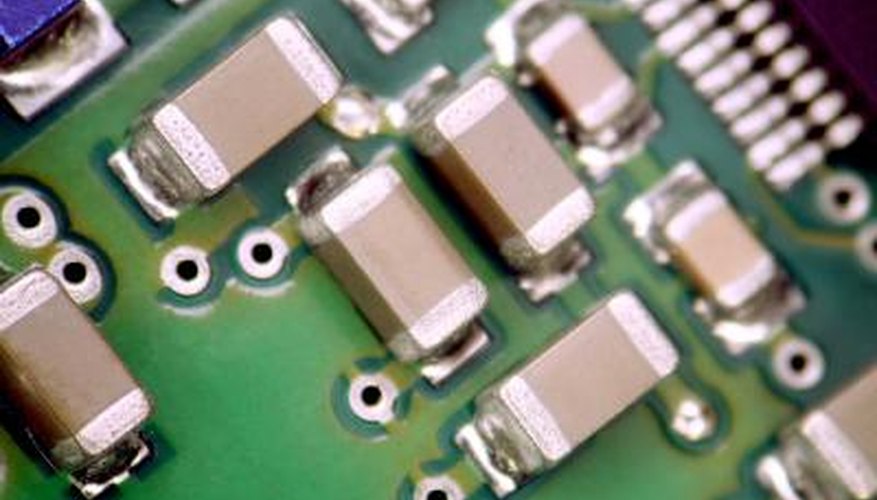Capacitors are fundamental electronic components consisting of an insulator between a pair of metal foils. A voltage between the foils stores an electric charge in the insulator, and the capacitor's properties depend on the kind of insulator it uses. Ceramic capacitors alternate layers of conductive metals with a ceramic insulator, making a durable, compact component. As with any material, ceramics have trade-offs, working well in some circumstances and not in others.
Non-Polar
Some kinds of capacitors, such as those that use an aluminum oxide insulator, develop a polarity, where one metal plate prefers negative charges and the other prefers positive charges. In direct current (DC) circuits, you know which sides are positive and negative, but in alternating current (AC) circuits, polarity is a problem. To their advantage, ceramic capacitors have no polarity; they work well in either AC or DC circuits.
Low Capacitance
Different insulating materials, called dielectrics, tend to have a range of capacitance values in which they work best. Because of the way manufacturers make them, ceramic capacitors generally have values less than 1 microfarad. If an electronics designer needs capacitors with values more than that, he tends to avoid ceramics and use tantalum or aluminium electrolytic types.
Microphonic
Some ceramic capacitors pick up mechanical vibrations like a microphone, turning them into unwanted electrical signals. Squeezing or vibrating the ceramic produces a small voltage in the capacitor. If the circuit's environment has strong vibrations, extra care in design can minimise the microphonic effect.
High Voltage
The thin, insulating layer in a capacitor can break down and conduct if a circuit puts too much voltage across it. This can destroy the component. Ceramic materials stand up to higher voltages than other insulating materials like plastics or aluminum oxide. Circuits that handle hundreds to thousands of volts typically use ceramic capacitors.
- The thin, insulating layer in a capacitor can break down and conduct if a circuit puts too much voltage across it.
- Ceramic materials stand up to higher voltages than other insulating materials like plastics or aluminum oxide.
